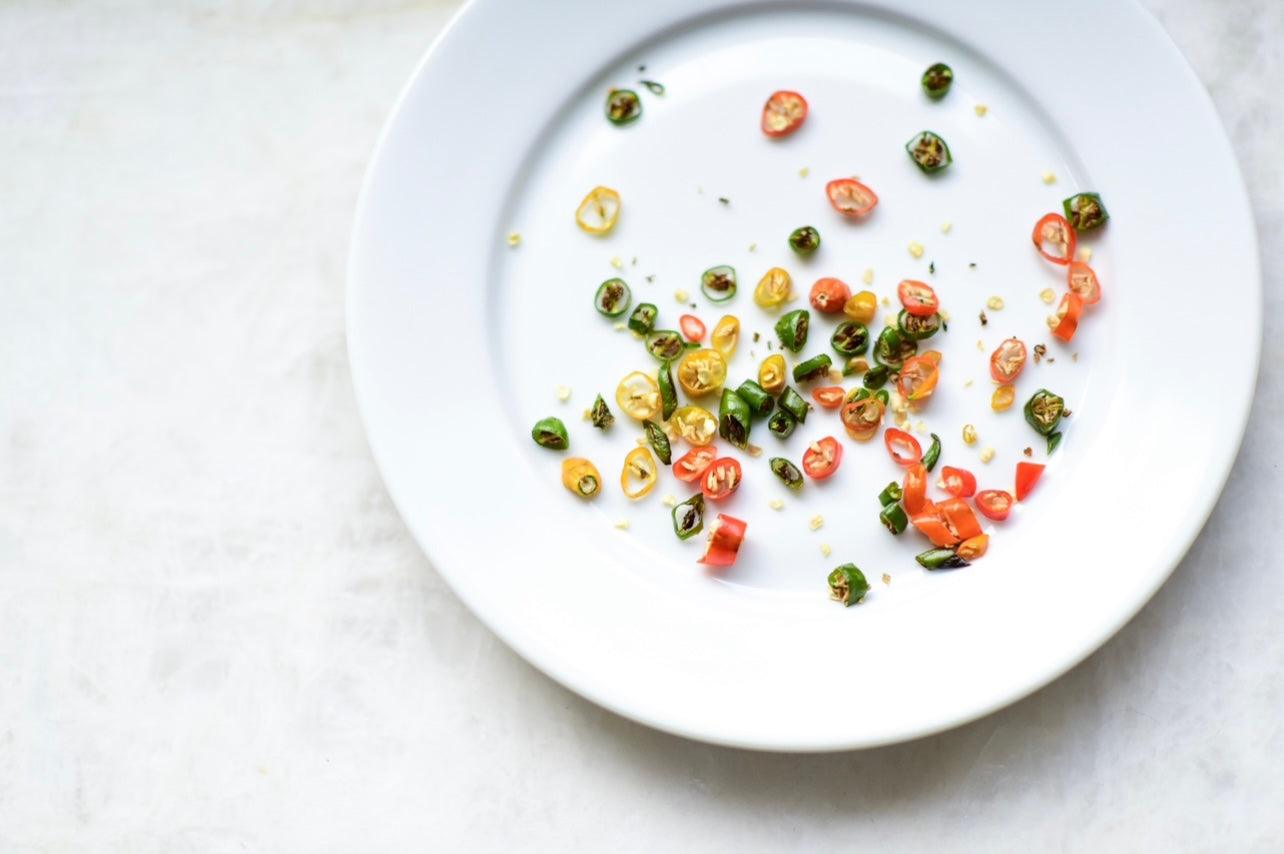February 09, 2023


But, is it spicy? It's a fair question and one that I am repeatedly asked as I showcase my Indian dishes in demos at various Whole Food Markets where my line is sold. It's what I encountered this past weekend at the Edgewater Whole Foods in Chicago. And why I thought it would be helpful to break down what spicy means to someone cooking and eating Indian food.
Most Indian food has a level of heat to it, but not all dishes have to be spicy. First, there is a difference between heat and flavor. Most of the spices that we include in our dishes add just flavor - garam masala, coriander powder, turmeric, etc. And when you use them there should be no heat. It's important that when you source these products you read the label. Some manufacturers are adding salt and chiles to their garam masala blend - we do not do that.
So where does the heat come in? It comes from the chiles. We add powdered chiles in the form or red chile powder or cayenne, fresh chiles, and sometimes whole dried red chiles. So whenever you want to make Indian food, but you don't want the heat just look for these two or three ingredients and either don't use them at all or reduce the amount you use.
In my recipes I give you a range of fresh chiles and types to use. We typically use a serrano or a Thai green chile. The serrano is longer, so when you look at my range you'll want to use less of it. If I state to use 1 - 4 Thai or serrano chiles, stems removed and thinly sliced, use 1 serrano but 4 Thai. That top of the range is what I actually use in my own home.
I tend to lean towards using Thai chiles because I love their heat and flavor. We also use quite a bit in our cooking - so don't be intimidated at all. When you cook Indian food at home just adjust for your taste.
While in the West chefs tend to remove and discard the inner membrane and the seeds, we don't. We use everything. That is actually where the heat resides. If you would prefer just the flavor and less heat, take the extra step to remove them. You may want to wear kitchen gloves so that you don't then touch your eyes.
The more you slice a chile, the more heat you release. So, if you want the flavor of the chile rather than the heat, just slice it once lengthwise, remove the insides, and drop it into your dish and remove before eating. You can also drop it in whole and then remove before eating.
Keep in mind as well that we in the Indian food space love chiles as much for flavor as we do for heat. Once you start to get used to using them in your cooking, you'll realize and appreciate this as well. I have a Burmese teeny tiny chile that my mom grows that is incredibly delicious and has a flavor that is unmatched by any other chile I've ever tried.
Why not use jalapeno? You can, but the skin is thicker and we tend to not love its flavor profile in our cooking as much. It also does not break down and 'melt' into our dishes.
Non-native Indian food eaters wonder all the time why my recipes are so spicy. Well, because I want to give you a recipe that we would actually eat in our homes. And then I want you to pull back on the heat as you see fit. I see too many Indian recipes written for an American audience - so when I replicate it at home I wonder what in the world they were thinking. It's not even close to what we would make in our own homes. This way, you can navigate my recipes knowing they are indeed authentic to Punjabi taste profiles but adjust as you see fit. The funny thing is when native Indian food eaters make my dishes they are excited to taste that the recipes taste like what they eat at home. A few have even asked me to ramp up the chiles!
What are your thoughts on adding chiles to your cooking? Tell us in the comment section below! I'd love to hear from you.
Comments will be approved before showing up.